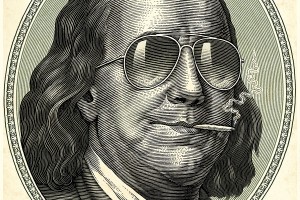Which Massachusetts Schools Offer a Bad Return on Investment?
The Daily Beast released a series of slideshows ranking colleges on various criteria, and two of their most interesting lists were those that ranked schools based on which were the best or worst returns on investment. The short version: Your money is better spent at MIT than Emerson. No, no, no need to thank us for that insight!
We clicked through the slideshows so you won’t have to and the news for Massachusetts schools is as follows. Among the worst returns on investment are Mt. Holyoke (at #9), Wheaton College (at #10), and Emerson (at #16). Among the best? Surprise, surprise: MIT is #2, Harvard is #7, Williams is #13, and Amherst is #20. And if you noticed that these are perennially the top two Massachusetts universities and the top two liberal arts colleges in the US News and World Report rankings, well, congrats.
The Daily Beast’s methodology for its rankings (which is often both compelling and flawed) gives equal weight to the average net price of a year of tuition, the average starting salary, and the average mid-career salary. The philosophical quibble here is one that was pointed out by none other than Harvard President Drew Faust in a letter to the New York Times (responding to something other than a Daily Beast slideshow.) Colleges, she said, shouldn’t be judged based on the first paychecks of their graduates:
The focus in federal policy making and rhetoric on earnings data as the indicator of the value of higher education will further the growing perception that a college degree should be simply a ticket to a first job, rather than a passport to a lifetime of citizenship, opportunity, growth and change.
I graduated from Bryn Mawr College in 1968, and my first job was working for the Department of Housing and Urban Development. My starting salary was low, but I was inspired by the civil rights movement and the War on Poverty to regard public service as an important calling.
The Daily Beast gives weight to factors other than just a graduate’s starting salary by including mid-career salary and the tuition price, which goes some of the way to addressing Faust’s complaint about judging a school whose graduates decide to go into public service or another low-pay, high-reward gig for some time.
But more broadly, Faust is concerned with any metric that ignores the intangible benefits of a college degree, and that’s not a concern that’s repaired by including a mid-career salary. Emerson’s focus on communications and performing arts doesn’t exactly set its graduates up for high-paying jobs. And that’s not why people go to school for performing arts. Harvard’s liberal arts programs, too, probably produce more artists and writers than, say, MIT, which is why MIT wins on a ranking of return-on-investment where Harvard often bests it on other lists.
So while it is useful in these times of crippling student loan debt to consider the return on your college tuition’s investment when deciding where to go and for what purpose, we imagine that a lot of people are weighing alternative metrics for the return on investment, too. (Luckily, the Daily Beast has a 20 Sexxxiest Colleges list to help you sort through at least one of them.)


